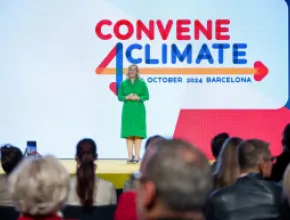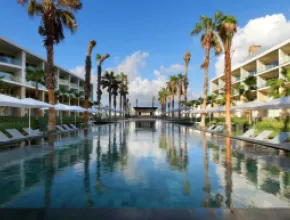If you have ever been on a trade show floor an hour after the show closes you have seen the amazing amount of waste. There is paper, cardboard, all sorts of giveaways, lumber—you name it. Once, I even saw koi fish that had been on display in a booth.
Trade shows and expositions are often the component of a conference that has the most significant impact on the environment. Exhibitions use large amounts of energy, require considerable transportation and generate a tremen-dous amount of waste—all of which affect the health of the planet.
Statistics show us one three-day conference/trade show with 500 booths is estimated to use:
- 617,000 KwH electricity
- 28,000 therms of natural gas
- 376,000 gallons of fuel
- And produces 8 million tons of carbon dioxide.
As the meeting planner, there are a few easy things to do:
- Participate in the facility’s recycling program as well as donate locally. Remember to train the booth staff to assist with this process.
- Minimize packaging materials on all booth items and use environmentally responsible packing materials.
- Avoid large quantities of collateral. Provide information electronically whenever possible.
- If printed materials can’t be avoided, they should be printed with vegetable-based ink on at least 30 percent-minimum, post-consumer recycled paper.
- Provide environmentally responsible giveaways and ensure they are not made from endangered or threatened species. (You wouldn’t think we would have to say that.)
- Design displays to be made with environmentally responsible materials, including energy efficient lighting.
- Make signage from recycled materials and reuse or donate it after the show.
- Minimize transportation to and from the show site. Use biodiesel-fueled or alternative-fuel trucks. Offset transportation emissions with a carbon offset program.
When working with a general service contractor (GSC), always ask about their environmental practices. Suppliers to the exhibit industry report a high interest in green exhibiting options. In a 2007 trend report, “An Inconvenient Booth,” an overwhelming 81 percent of suppliers agreed, citing “an untapped market for green exhibiting options does exist—to the tune of an estimated $9.24 billion.” General service contractors have moved quickly to identify environmental practices and new products available to the industry.
Following are some examples:
- A new Bio-Board is available from XL Prints that is an environmentally friendly alternative to rigid PVC board substrate.
- Lanyards such as the Ecospun Recycled Lanyard from Marco are now made out of recycled soda and water bottles.
- Green shipping options for exhibits are popping up, such as EA Logistics’ Delivered GrEAn program. The company will offset your shipments’ emissions with a carbon offset program.
- The Velocity exhibit-display by Nimlok is at least 90 percent recyclable.
- Rental furniture is available from Girari Furniture, which makes tables, chairs and couches from recycled aluminum, fabrics and reclaimed wood.
Things are moving so quickly, in fact, that I suggest you follow the “six-month rule.” If you haven’t checked with your GSC in six months on new products and services, check again.
At a minimum, ask the facility to provide the following:
- Recycling bins on the show floor: Many facilities that have recycling programs do not tend to ensure recycling bins are placed on the show floor during move-in and move-out and during the show. Make sure that recycling bins are placed next to trash receptacles and not across the aisle or against an adjacent wall.
- Collection bins for less common materials such as batteries and vinyl table coverings.
- Information for exhibitors outlining what material is collected and what they must do to participate.
- An area to donate leftover signage, giveaways and flowers to schools or civic organizations.
- Organization names to contact for the donated items. Your organization may have the donation stream in place or the facility may be able to recommend one.
- Lighting and electrical conservation practices using half-lights and not HVAC during move-in and move-out.
Measure your success and let participants know what has been done to minimize the environmental footprint. Ask them for feedback and suggestions. This could be the most talked-about exhibit show you’ve ever done!





